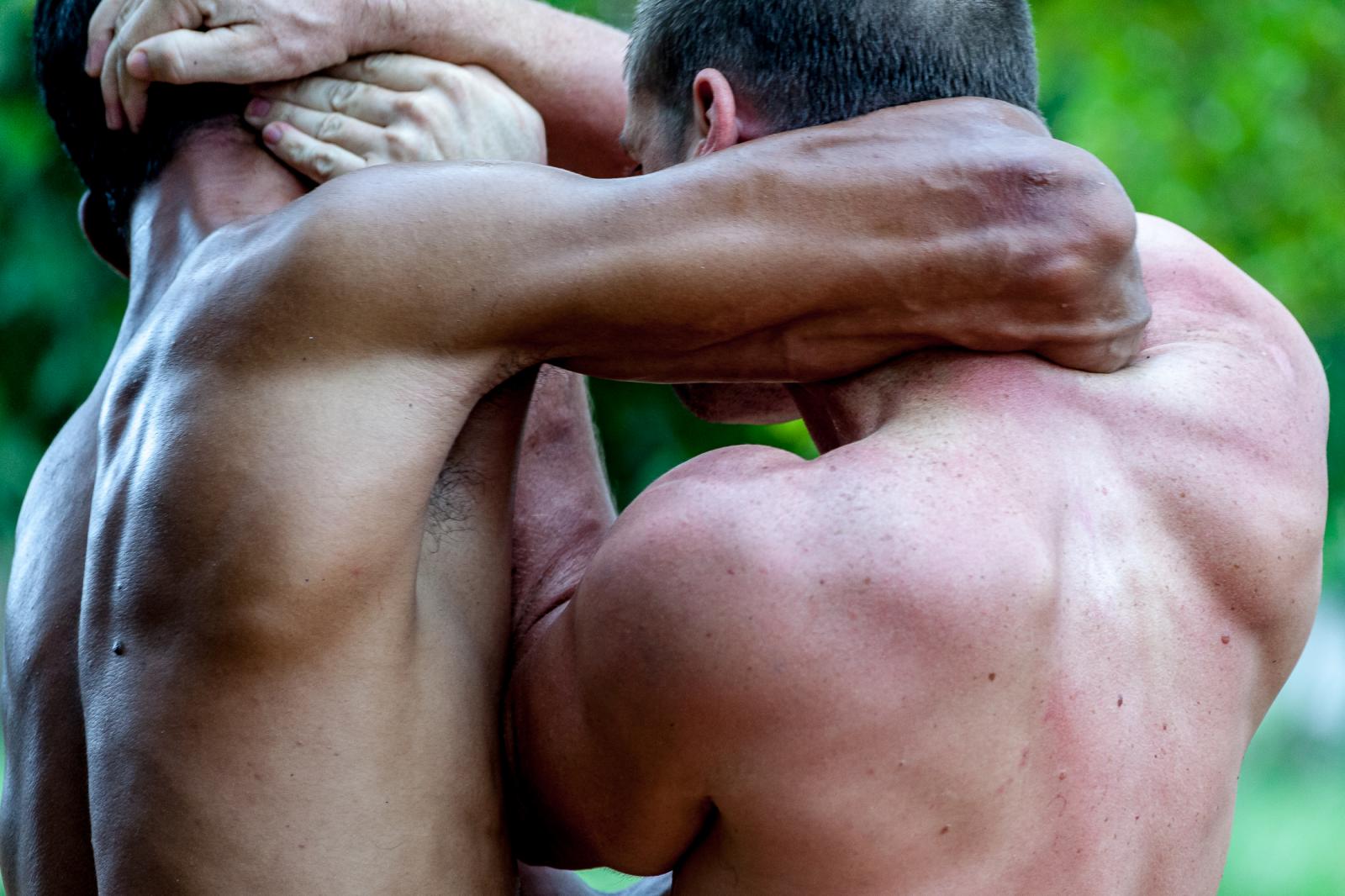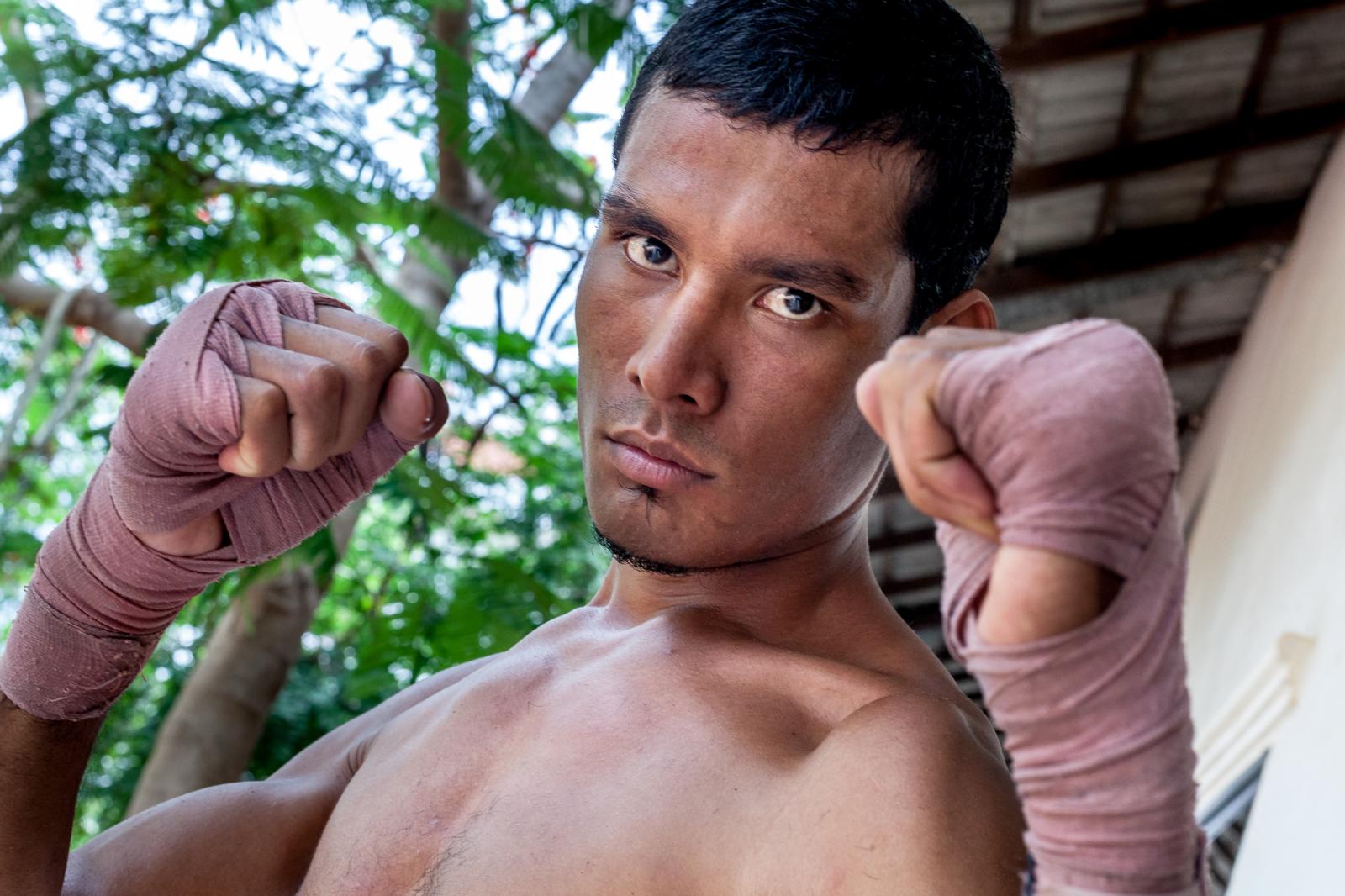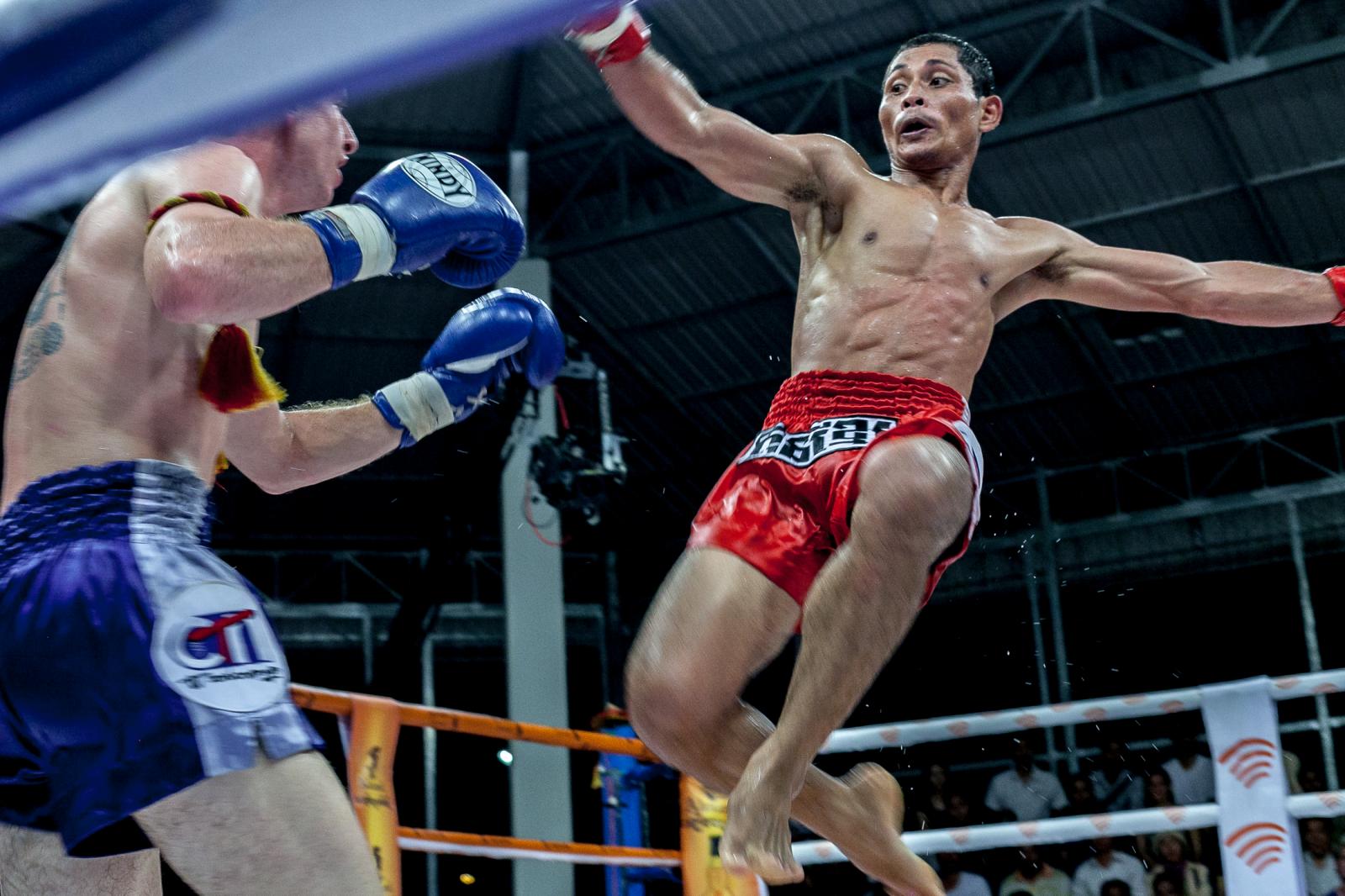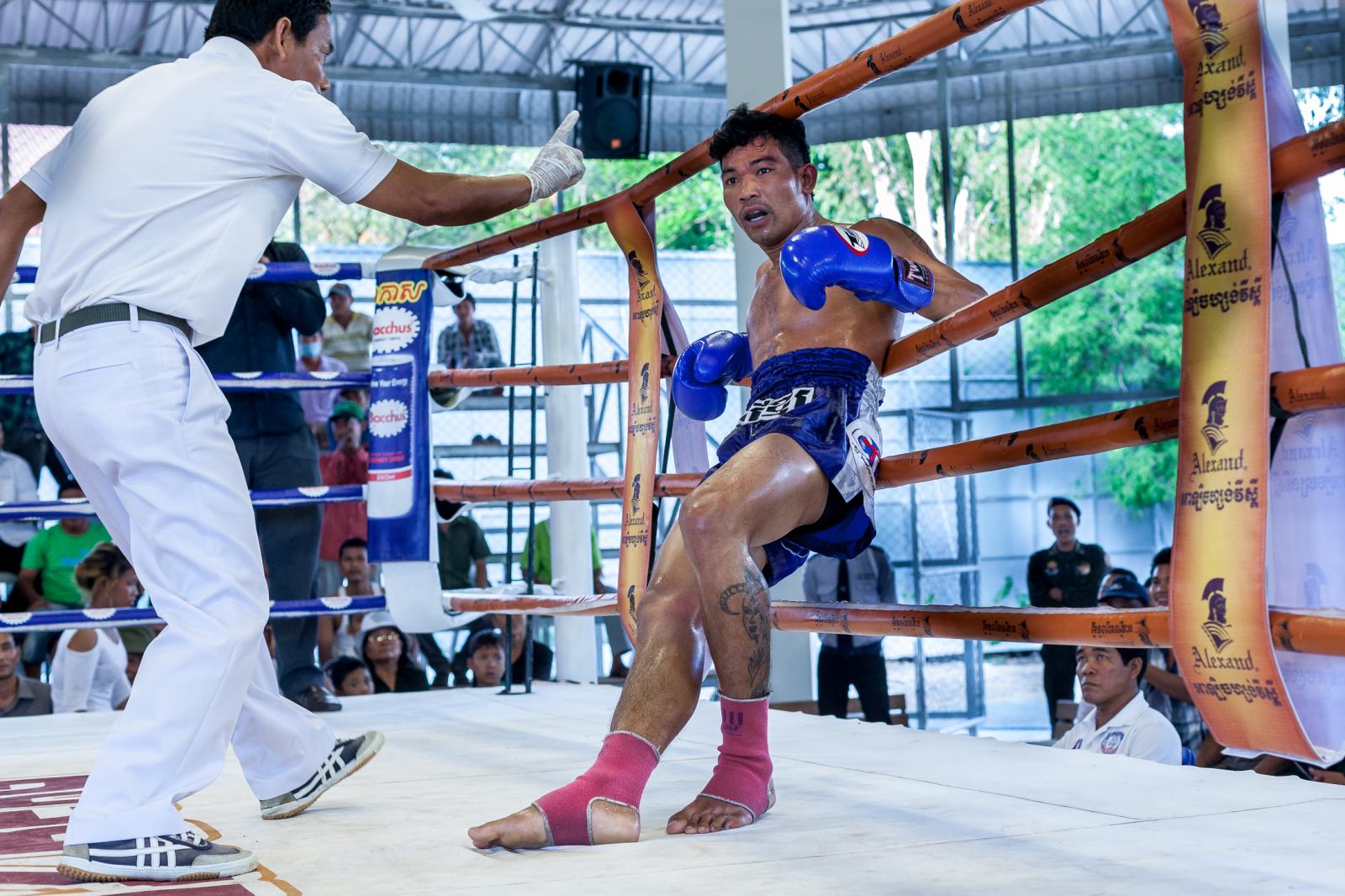Pradal Serey or Kun Khmer -free fighting- is an unarmed martial art from Cambodia. Compared to other forms of Southeast Asian kickboxing, Kun Khmer emphasizes more elusive and shifty fighting stances. The Cambodian style tends to utilize more elbows than that of other regions. Evidence shows that a style resembling pradal serey existed in the 9th century, leading the Khmer to believe all Southeast Asian forms of kickboxing started with the early Mon-Khmer people. They maintain that Pradal Serey has influenced much of the basis of Muay Thai. During the Khmer Rouge genocide, traditional martial arts were banned and many boxers were executed or worked to death, which nearly caused the death of pradal serey. Nowadays, Kun Khmer is making a strong comeback in Cambodia, with fighters attempting to market their style of boxing at the same caliber of Muay Thai.
Photography: ©Omar Havana. All Rights are Reserved
























